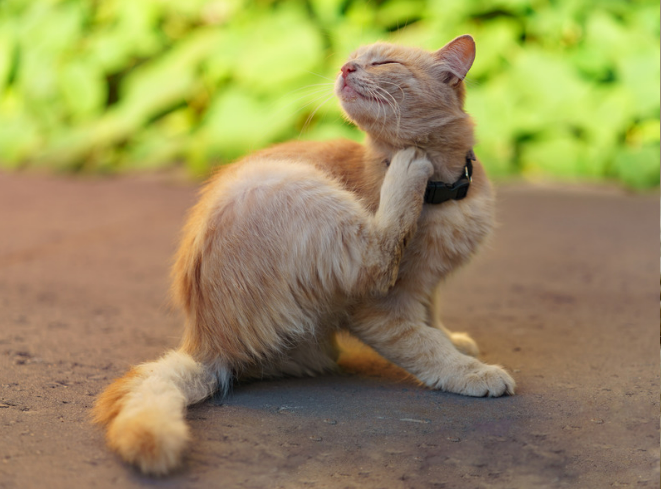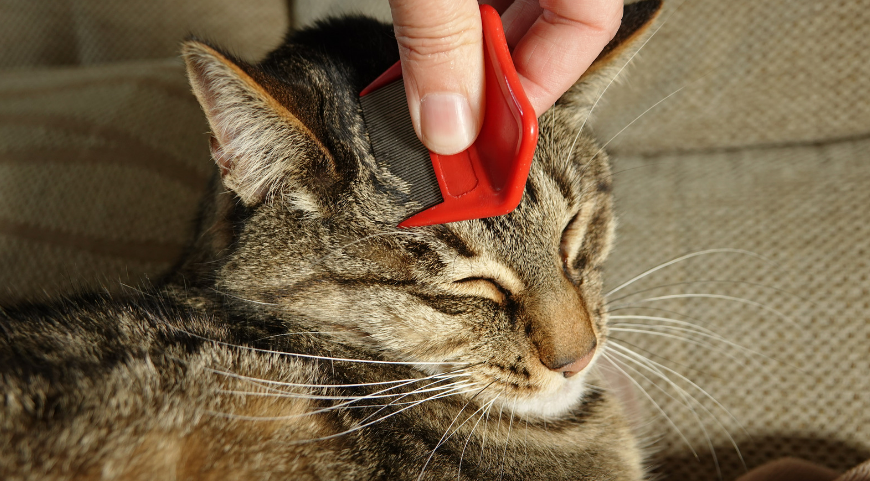Introduction: The Power of Essential Oils in Flea Control for Cats

Natural Flea Repellents for Cats. Fleas are a common nuisance for our feline friends, often leading to discomfort and health issues. In this battle against these pesky parasites, essential oils emerge as a promising ally. Recognizing the need for safer, natural alternatives to chemical treatments, this guide explores the efficacy of essential oils in repelling fleas. Before diving into the specifics, it’s crucial to underscore the importance of using cat-safe oils. Cats have unique sensitivities; hence, selecting the right oils and dilution practices is vital for their safety. This approach not only ensures the well-being of our pets but also aligns with a more holistic, environmentally friendly method of flea control. …Click Here to Read More!
For further insights on the impact of fleas on cats and their behavior, the Cornell Feline Health Center provides valuable information. By turning to such reputable sources, we deepen our understanding and are better equipped to protect our cats effectively.
Understanding Essential Oils: Safety and Efficacy
Essential Oil Basics
Essential oils, concentrated extracts from plants, play a pivotal role in natural remedies. They are obtained through distillation, capturing the essence of the plant’s fragrance and therapeutic properties. These oils, when used correctly, can offer a multitude of benefits, including acting as a natural deterrent against fleas.
Safe Usage for Cats
Cats are particularly sensitive to certain substances, making the safe use of essential oils paramount. It’s essential to avoid oils that are toxic to cats and to always dilute essential oils appropriately. Consulting with a veterinarian before use is a wise step to ensure the safety and health of your feline companion.
Effectiveness Against Fleas
The flea-repelling properties of some essential oils have been noted in various studies. For instance, oils like lavender and cedarwood are known for their natural insect-repelling qualities. Incorporating these oils into your flea control strategy can be an effective and natural way to protect your cat.
For comprehensive information on essential oils and their properties, resources like the National Association for Holistic Aromatherapy offer in-depth insights. Such trusted sources enrich our understanding and guide us in making informed choices for our pets’ well-being.
Top Essential Oils for Flea Repellent in Cats
- Lavender Oil
- Lavender oil, renowned for its soothing aroma, also doubles as a flea repellent. Its gentle nature makes it suitable for use around cats when diluted properly. The oil’s calming properties can additionally ease stress in cats, often a side effect of flea infestations.
- Cedarwood Oil
- Cedarwood oil is another effective flea deterrent. Its strong scent is disliked by fleas, yet it’s safe for cats when used in moderation. This oil not only repels fleas but can also contribute to a more relaxed environment for your pet.
- Lemongrass Oil
- Lemongrass oil, known for its refreshing citrus scent, is a natural flea repellent. However, its potency requires careful dilution to ensure it’s safe for feline use. This oil is best used in small quantities and in areas less accessible to your cat.
- Peppermint Oil
- Peppermint oil is often debated in flea control. While effective against fleas, it must be used with caution around cats. A highly diluted form, if at all, is recommended, and it’s crucial to observe your cat’s reaction to this oil.
To understand more about the properties of these essential oils and their efficacy in repelling fleas, the American Society for the Prevention of Cruelty to Animals (ASPCA) provides detailed information. This source helps in making informed and safe choices for flea control in cats.
Creating and Applying Flea Repellent Blends
DIY Blends for Flea Control
Creating your own flea repellent blends allows for customized solutions tailored to your cat’s needs. By combining safe essential oils, you can create effective mixtures that repel fleas naturally. These blends can be made using base oils like coconut oil, which is safe for cats and enhances the distribution of the essential oils.
Application Techniques
Applying these blends correctly is crucial for their effectiveness and your cat’s safety. The key is to apply the diluted solution to areas where fleas are likely to latch onto your cat, such as the base of the tail or behind the ears. However, it’s important to avoid sensitive areas like the face and to always monitor your cat for any adverse reactions.
To learn more about DIY essential oil blends and safe application methods, the Pet Poison Helpline offers valuable advice. This resource provides essential guidelines to ensure the health and safety of your pets while using natural remedies.
Additional Natural Flea Control Strategies
Hygiene and Grooming

Maintaining good hygiene and regular grooming are fundamental in controlling fleas on cats. Regular baths with mild, cat-safe shampoos can help remove fleas and their eggs. Additionally, combing your cat with a flea comb is an effective way to physically remove fleas and monitor the severity of the infestation.
Environmental Control
Creating a flea-free environment is just as crucial as treating your cat. This includes regular cleaning of bedding, carpets, and furniture where fleas can hide. Vacuuming regularly and using natural flea control products in your home can significantly reduce the flea population and prevent reinfestation.
For more detailed information on maintaining a flea-free environment, the Environmental Protection Agency (EPA) offers comprehensive guidelines. This trusted source helps ensure that the strategies you employ are both effective and safe for your home and pets.
Conclusion: Embracing a Holistic Approach to Flea Control
Summary of Key Points
This guide has explored the use of essential oils as a natural method to repel fleas in cats, emphasizing the importance of safety and efficacy. We’ve covered a range of oils, from lavender to peppermint, and delved into creating effective DIY blends. Additionally, we stressed the significance of hygiene and environmental control in a comprehensive flea management plan.
Final Thoughts
Adopting a holistic approach to flea control is about balancing natural remedies with regular pet care practices. It’s crucial to consider your cat’s overall well-being, ensuring that any flea treatment is as stress-free and safe as possible. Remember, effective flea control is not just about repelling fleas but also about creating a healthy environment for your beloved pet.
For a broader perspective on holistic pet care and flea management, resources like the American Veterinary Medical Association offer extensive insights. These guidelines help pet owners make informed decisions, ensuring the health and happiness of their cats.